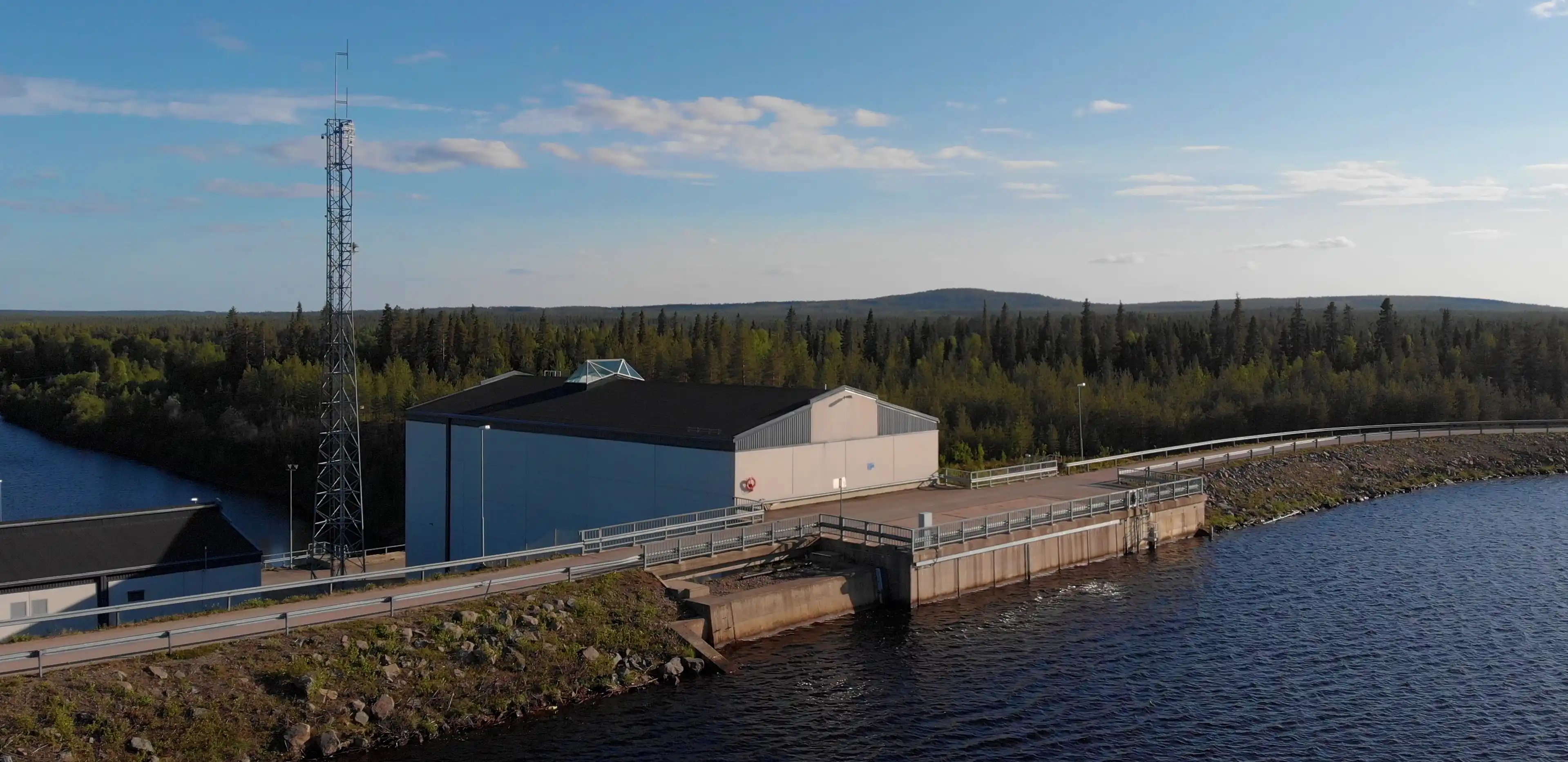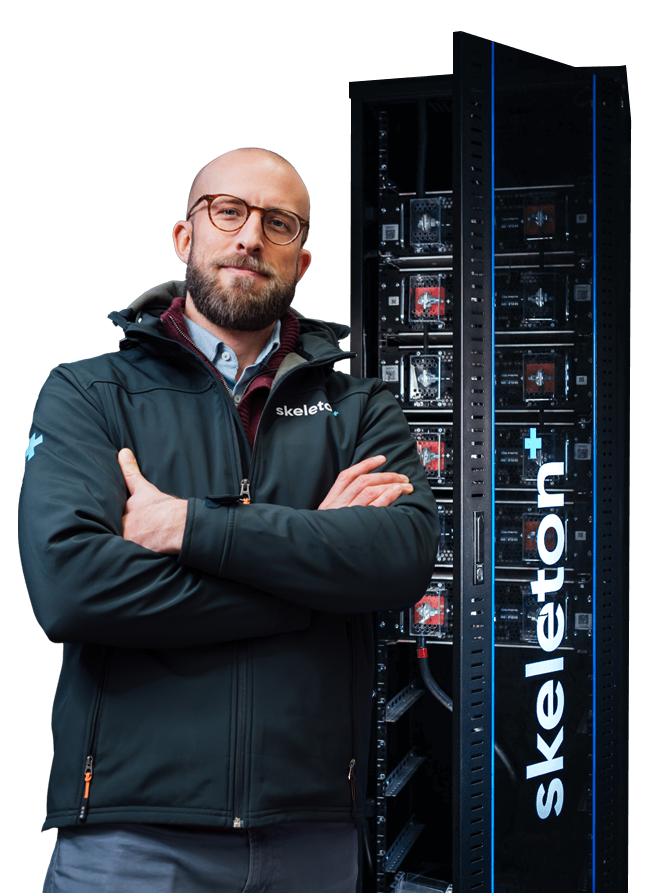
Supercapacitors Empower Hydropower Plants for Grid Stabilization and Revenue Generation

Skeleton Technologies provided supercapacitors for the energy storage system integrated into the Kurkiaska hydropower plant in Finland, facilitating a seamless 2 MW ramp-up. This empowers the plant to participate in Frequency Containment Reserves including the Fast Frequency Reserve. Kemijoki Oy expects that this would safeguard its machinery against the wear and tear that constant grid fluctuations would otherwise induce and is now starting the evaluation period.
Around the world, coal power plants are being closed. In the drive towards decarbonization, renewable energy sources are added to the grid, predominantly wind and solar power which by nature are both unpredictable and unstable with low inertia.
Hydropower is well-suited to compensate for shortfalls and stabilize the grid when other power sources fail or load shifts cause grid frequency drops. However, the large masses to be set in motion limit how fast changes hydropower can balance. Hydropower turbines cannot accelerate quickly enough to meet the increased demand in the grid instantly. It will take the turbines few seconds before they are up to setpoint delivery.
Energy storage solutions can provide Fast Frequency Response (FFR) and bridge this turbine acceleration gap by providing power during critical seconds before the hydropower plant catches up with the changed grid demand.
“For Fast Frequency Response, supercapacitors are the optimal choice of energy storage, because they deal best with the cyclic requirements and rapid high-power charges and discharges needed around the clock,” explained Lilli Hamari, Skeleton’s sales manager in Grid & Renewables.
A supercapacitor-based solution connected to the power conversion system reacts within milliseconds to variations in frequency, providing the required amount of power to the grid, for it to gain back its stable 50-hertz frequency. Depending on the sizing of the supercapacitor solution, it can even deliver an active power boost for over a minute.
With required ramp-up times of 0,7-1,3 seconds to access the Nordic Fast Frequency Reserve market, traditional hydro plants are unsuitable to engage due to their inherent inability to instantaneously respond to dynamic power fluctuations. “The Kurkiaska hydropower plant, for example, can adjust its power output due to low headwater levels and slow waterways within seconds, not in milliseconds. By integrating supercapacitor-based energy storage with the hydropower generator, the reaction delay is close to zero, enabling hydropower plants to produce fast frequency reserve and participating in the reserve markets, without its straining impact on the power plant machinery",” said Hamari.
 Lilli Hamari
Lilli Hamari
Kemijoki Oy
Kemijoki Oy is the most important producer of hydropower and regulating power in Finland with nearly 70-year experience in the building, use, maintenance and capacity increases of hydropower plants. The company owns 20 plants with a total output of over 1,100 MW. In 2021, Kemijoki Oy produced a total of 5,231 GWh of electricity. The company aims to be the frontrunner in the green transition and contribute to reshaping the electrical system.
“Our goal is to become a flexible power producer, increasing our significance in the electrical system of tomorrow. In 2021, we undertook a study of available energy storage system technologies. Supercapacitor-based solutions emerged as our top choice, leading to the launch of a pilot project at our Kurkiaska plant. By integrating supercapacitor-based energy storage with the hydropower generator, we can virtually eliminate the delay, producing high-quality reserve offerings for the market,” commented Kemijoki Oy COO Sakke Rantala.
Maintenance
Grid frequency fluctuations have increased due to renewable source integration like wind and solar. Simultaneously, tougher frequency regulation demands a faster response from energy producers, increasing turbine reactions and causing extra wear on mechanical components. By combining hydropower with energy storage, Kemijoki Oy anticipates reduced mechanical movement, leading to maintenance cost savings.
“When hydropower is participating in the reserve markets, grid frequency fluctuations make the turbine regulate constantly. Without the supercapacitor energy storage buffering, all fluctuations are reflected in the turbine system which at its worst will lead to premature machinery aging and increased maintenance needs,” said Aleksi Sarajärvi, Electricity system specialist from Kemijoki Oy.
Supercapacitors provide an efficient means of storing and releasing energy quickly and reliably. Extending the turbine’s required reaction time reduces wear and tear on the machinery, resulting in less frequent maintenance requirements and longer-term sustainability of the hydropower plant.
In conclusion, by including supercapacitor-based energy storage in the hydropower plant overhaul, the site can contribute to the Fast Frequency Reserve. Stabilization of the grid's frequency and prevention of disturbances can provide a new source of revenue. Adding high-power supercapacitors also has the positive effect of lowering the maintenance cost of turbine systems, since the ramping can be done slower or even completely avoided.
Kurkiaska plant
Kurkiaska hydropower plant was constructed in 1990-1992. With a hydraulic head of 12.5 meters, it commands a nominal output of 27 megawatts. Kurkiaska plant generates annual net energy of 83.1 gigawatt-hours, optimizing an average flow rate of 103 cubic meters per second and discharge capacity of 260 cubic meters per second.

Fast Frequency Reserve (Source: Fingrid)
The Fast Frequency Reserve was implemented in the Nordics in May 2020 with Fingrid procuring the reserve from the national market in Finland.
The Fast Frequency Reserve is procured to handle low-inertia situations. Inertia refers to the kinetic energy stored in rotating masses of generators that helps maintain the grid's stability and frequency. The operation of the power system follows a dimensioning principle according to which the loss of a single electricity production unit or an HVDC (High-Voltage Direct Current) link must not cause the frequency to fall below 49.0 Hz. The magnitude of the frequency change following a disturbance depends on the magnitude of the power change caused by the disturbance, the system inertia and the speed at which the reserves are activated. The needed volume of Fast Frequency Reserve depends on the prevailing inertia in the power system and the size of the reference incident.
The need to procure a Fast Frequency Reserve depends on the inertia of the electricity system, so it is procured for only some of the hours and the volume to be procured may vary. The procurement need is highest in the spring, summer and autumn months at times when the amount of inertia is at its lowest.
The Reserve Units participating in the maintenance of the Fast Frequency Reserve must meet the technical requirements for the reserve. The reserve power must be activated in full within the required time when the frequency falls below a certain value.
| Activation frequency (Hz) | Max. activation time (sec) |
| 49.7 | 1.3 |
| 49.6 | 1.0 |
| 49.5 | 0.7 |
The minimum duration of activation is 5 seconds if the power deactivation rate is no more than 20% of the FFR capacity per second. If the deactivation rate is higher, the minimum duration of activation is 30 seconds. A Reserve Unit must be able to reactivate within 15 minutes of the previous activation.
%20copy%202.webp?width=1280&height=720&name=MicrosoftTeams-image%20(34)%20copy%202.webp)





